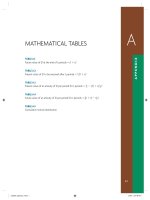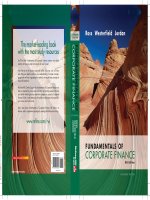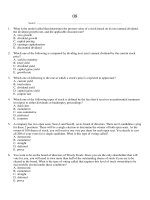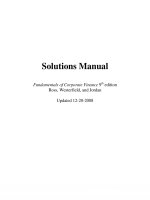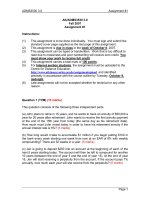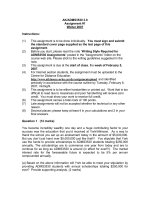exam solution 8 fundamentals of corporate finance, 4th edition brealey
Bạn đang xem bản rút gọn của tài liệu. Xem và tải ngay bản đầy đủ của tài liệu tại đây (107.55 KB, 10 trang )
�������������������������������������������������������������������������������������������������������������������������������������������������������������������������������������������������������������������������������������������������������������������������������������������������������������������������������������������������������������������������������������������������������������������������������������������������������������������������������������������������������������������������������������������������������������������������������������������������������������������������������������������������������������������������������������������������������������������������������������������������������������������������������������������������������������������������������������������������������������������������������������������������������������������������������������������������������������������������������������������������������������������������������������������������������������������������������������������������������������������������������������������������������������������������������������������������������������������������������������������������������������������������������������������������������������������������������������������������������������������������������������������������������������������������������������������������������������������������������������������������������������������������������������������������������������������������������������������������������������������������������������������������������������������������������������������������������������������������������������������������������������������������������������������������������������������������������������������������������������������������������������������������������������������������������������������������������������������������������������������������������������������������������������������������������������������������������������������������������������������������������������������������������������������������������������������������������������������������������������������������������������������������������������������������������������������������������������������������������������������������������������������������������������������������������������������������������������������������������������������������������������������������������������������������������������������������������������������������������������������������������������������������������������������������������������������������������������������������������������������������������������������������������������������������������������������������������������������������������������������������������������������������������������������������������������������������������������������������������������������������������������������������������������������������������������������������������������������������������������������������������������������������������������������������������������������������������������������������������������������������������������������������������������������������������������������������������������������������������������������������������������������������������������������������������������������������������������������������������������������������������������������������������������������������������������������������������������������������������������������������������������������������������������������������������������������������������������������������������������������������������������������������������������������������������������������������������������������������������������������������������������������������������������������������������������������������������������������������������������������������������������������������������������������������������������������������������������������������������������������������������������������������������������������������������������������������������������������������������������������������������������������������������������������������������������������������������������������������������������������������������������������������������������������������������������������������������������������������������������������������������������������������������������������������������������������������������������������������������������������������������������������������������������������������������������������������������������������������������������������������������������������������������������������������������������������������������������������������������������������������������������������������������������������������������������������������������������������������������������������������������������������������������������������������������������������������������������������������������������������������������������������������������������������������������������������������������������������������������������������������������������������������������������������������������������������������������������������������������������������������������������������������������������������������������������������������������������������������������������������������������������������������������������������������������������������������������������������������������������������������������������������������������������������������������������������������������������������������������������������������������������������������������������������������������������������������������������������������������������������������������������������������������������������������������������������������������������������������������������������������������������������������������������������������������������������������������������������������������������������������������������������������������������������������������������������������������������������������������������������������������������������������������������������������������������������������������������������������������������������������������������������������������������������������������������������������������������������������������������������������������������������������������������������������������������������������������������������������������������������������������������������������������������������������������������������������������������������������������������������������������������������������������������������������������������������������������������������������������������������������������������������������������������������������������������������������������������������������������������������������������������������������������������������������������������������������������������������������������������������������������������������������������������������������������������������������������������������������������������������������������������������������������������������������������������������������������������������������������������������������������������������������������������������������������������������������������������������������������������������������������������������������������������������������������������������������������������������������������������������������������������������������������������������������������������������������������������������������������������������������������������������������������������������������������������������������������������������������������������������������������������������������������������������������������������������������������������������������������������������������������������������������������������������������������������������������������������������������������������������������������������������������������������������������������������������������������������������������������������������������������������������������������������������������������������������������������������������������������������������������������������������������������������������������������������������������������������������������������������������������������������������������������� of stock that offers a constant
growth rate of 10 percent, requires a 16 percent rate of return, and is expected to
sell for $50 one year from now?
A) $42.00
B) $45.00
C) $45.45
D) $47.00
7
Conceptual questions (2 points each)
21. Which of the following is least likely to represent an agency problem?
A) Lavish spending on expense accounts.
B) Plush remodeling of the executive suite.
C) Excessive investment in "safe" projects.
D) Executive incentive compensation plans.
22. Under which of the following conditions will a future value calculated with
simple interest exceed a future value calculated with compound interest at the
same rate?
A) The interest rate is very high.
B) The investment period is very long.
C) The compounding is annually.
D) This is not possible with positive interest rates.
23. Which of the following statements best describes the real interest rate?
A) Real interest rates exceed inflation rates.
B) Real interest rates can decline only to zero.
C) Real interest rates can be negative, zero, or positive.
D) Real interest rates traditionally exceed nominal rates.
24. As long as the interest rate is greater than zero, the present value of a single
sum will always:
A) be less than the future value.
B) decrease as the period of time decreases.
C) equal the future value if the time period is one year.
D) increase as the number of periods increases.
8
25. Which of the following statements is wrong about the time value of money
(TVM)?
A) Converting an annuity to an annuity due increases the present value.
B) An effective annual rate is always higher than an annual percentage rate,
other things being equal.
C) The more frequent the compounding, the higher the future value, other things
being equal.
D) For a given amount, the higher the discount rate, the lower the present value.
26. Cash flows occurring in different periods should not be compared unless:
A) interest rates are expected to be stable.
B) the cash flows occur no more than one year from each other.
C) higher rates of interest can be earned on the cash flows.
D) the cash flows have been discounted to a common date.
27. Which of the following will increase the present value of an annuity, other
things being equal?
A) Increasing the interest rate.
B) Decreasing the interest rate.
C) Decreasing the number of payments.
D) Decreasing the amount of the payments.
28. Which of the following statements about a bond’s coupon rate, current yield,
and yield to maturity (YTM) is correct?
A) When the bond sells at a premium, its coupon rate is higher than
yield, and its coupon rate is also higher than the YTM.
B) When the bond sells at a premium, its coupon rate is lower than
yield, and its coupon rate is higher than the YTM.
C) When the bond sells at a discount, its coupon rate is higher than
yield, and its coupon rate is lower than the YTM.
D) When the bond sells at a discount, its coupon rate is lower than
yield, and its coupon rate is higher than the YTM.
9
the current
the current
the current
the current
29. Reinvesting earnings into a firm will not increase the stock price unless:
A) the new paradigm of stock pricing is maintained.
B) true depreciation is less than reported depreciation.
C) the firm's dividends are growing also.
D) the ROE of new investments exceeds the firm's required rate of return.
30. The purpose of a sinking fund is to:
A) reduce the par value of stock over time.
B) take advantage of the tax break on preferred stock.
C) periodically retire debt prior to final maturity.
D) allow risky corporations to avoid bankruptcy.
10

